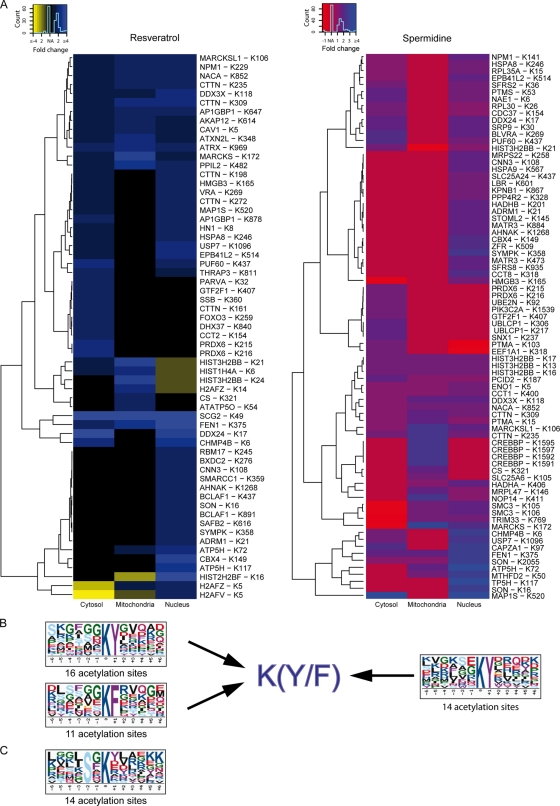Figure 6.
Significant motifs among sites undergoing acetylation. (A) Hierarchical clustering of the organellar distributions of sites whose acetylation was increased by >1.5-fold in response to resveratrol or spermidine, at least in one organellar fraction. (B) Consensus acetylation motifs identified upon resveratrol (left) or spermidine (right) treatment are depicted using the MotifX algorithm (Schwartz and Gygi, 2005). Among sites that were hyperacetylated in response to both agents, the K(F/Y) motif is significantly enriched when tested against the whole proteome (P < 0.00001). (C) When testing against the largest acetylation site dataset from Choudhary et al. (2009) (acetylation background dataset [ABD]), the SxK motif is significant (P < 0.0001) for sites whose acetylation increased upon spermidine treatment. No general consensus motifs were found for sites whose acetylation increased in response to both agents.

